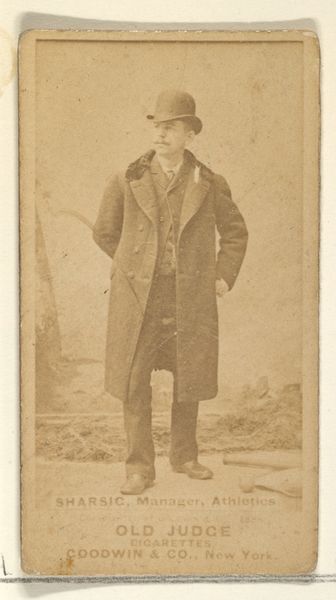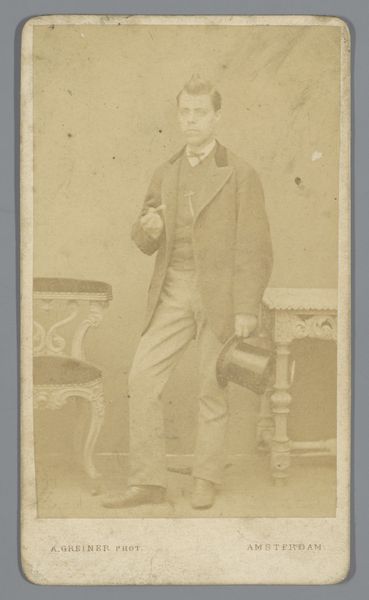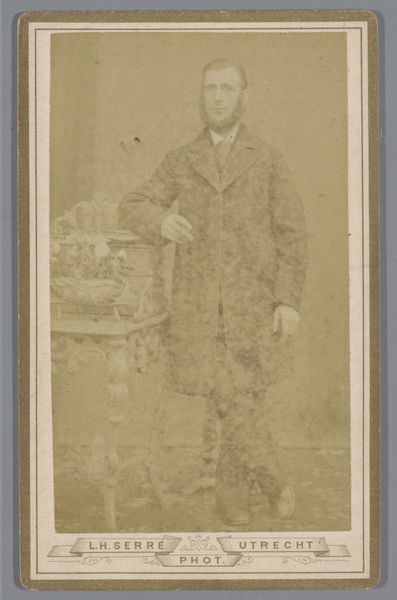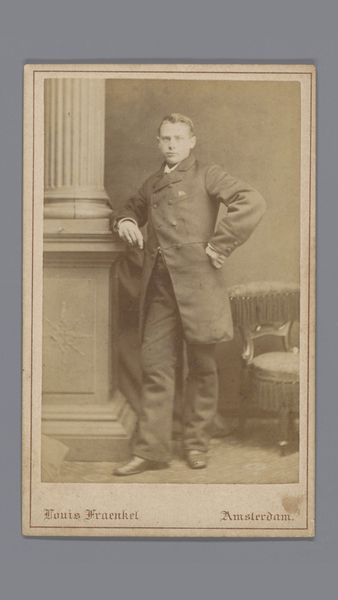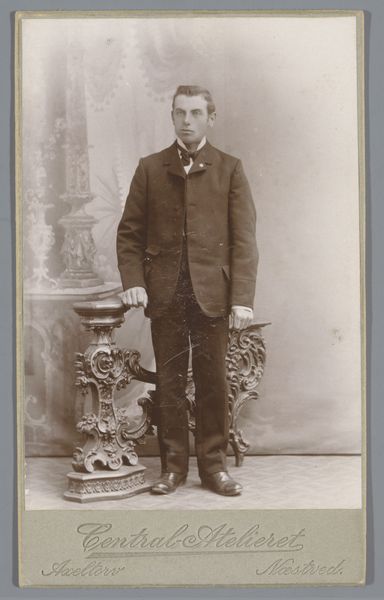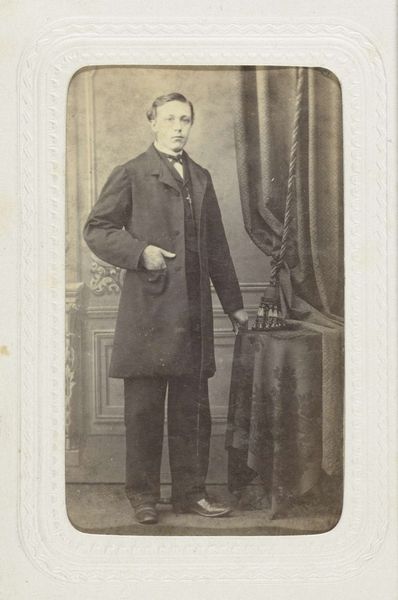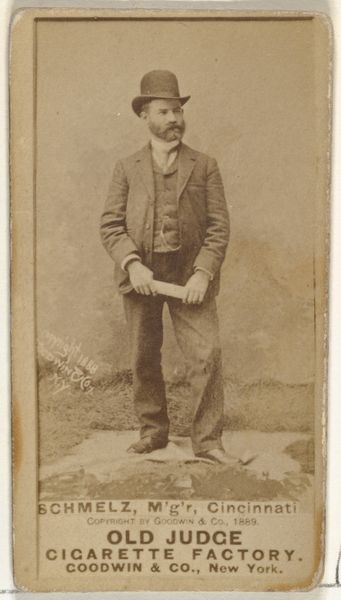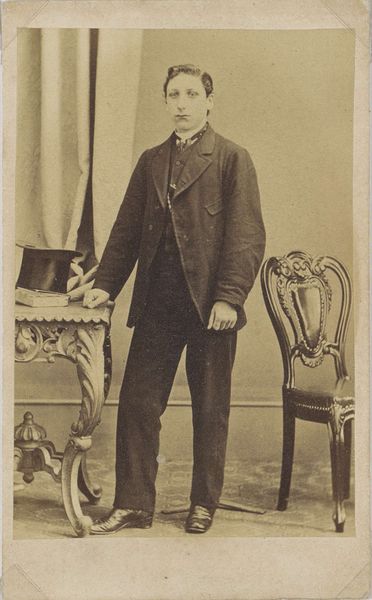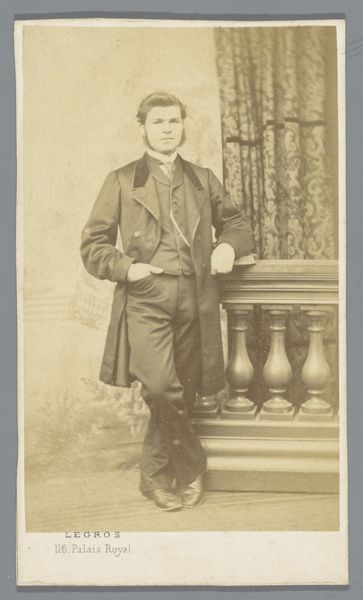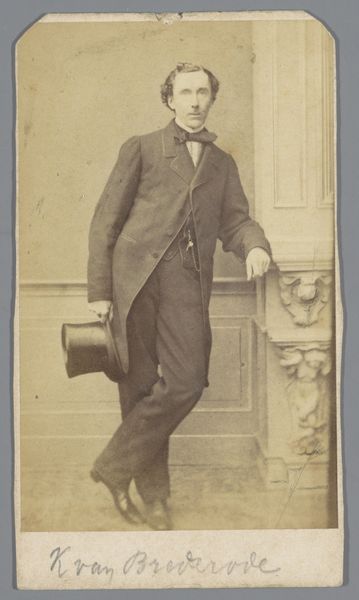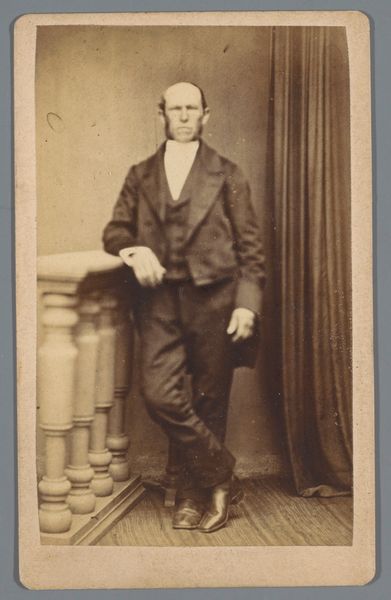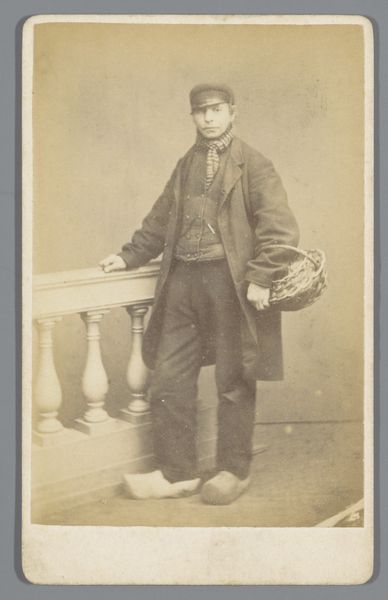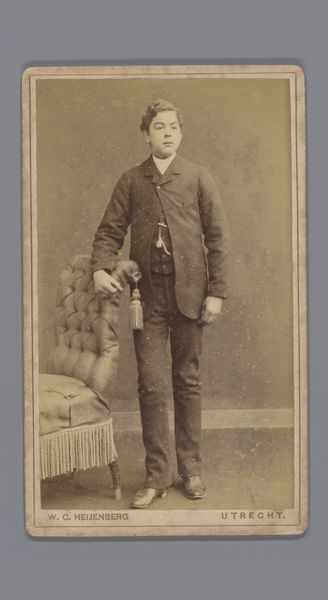
photography, gelatin-silver-print
#
portrait
#
photography
#
gelatin-silver-print
Dimensions: height 108 mm, width 63 mm
Copyright: Rijks Museum: Open Domain
Curator: Here we have "Portret van een jongeman genaamd Diedrich", a gelatin silver print, attributed to Wolffram & Büssenschütt, and likely taken between 1864 and 1866. It presents a formal, full-body portrait. Editor: My initial impression is one of understated elegance mixed with… awkwardness? He seems uncomfortable, doesn't he? Perhaps it's the stance, or the contrast of his checkered pants against the formality of the rest of his attire. Curator: Well, consider the materials involved. A gelatin silver print speaks to a particular moment in photographic technology. It marks a shift in production – more accessible, more replicable images compared to earlier photographic processes. This card format suggests wider distribution, likely intended for personal exchange, similar to calling cards. Editor: That's a great point about the technological shift affecting its circulation. It allows us to examine its role in society at the time. Portraiture, in the mid-19th century, was increasingly accessible to the middle class. It documents the burgeoning visibility and self-fashioning of that social stratum. The photograph itself becomes a form of social currency. Curator: Exactly! And looking closely at his clothes -- that watch chain draped across his vest hints at bourgeois aspiration. It says something about access, not just to photography, but to sartorial markers of status, which photography then helped solidify. Note, too, the prop – that little table – seemingly generic, yet reinforcing the artificiality of the constructed image. The photographer creates an aspirational staging for this sitter. Editor: But the staged setting also plays a role, subtly, in democratizing image-making. Suddenly, owning an image of oneself is less of an aristocratic luxury and more a part of building and participating in civic culture. We also need to examine how this photo functioned institutionally, the photographer's studio as a site for managing image and reputation. The location inscription gives it an extra flavor as a local story of its time. Curator: True, and analyzing the materials and method also invites considering who “Diedrich” was and how this portrait served to mediate and memorialize him within his social network. The photographic practice becomes enmeshed within a network of labour and desire. Editor: It shows that portraiture captures more than likeness. In it you capture shifts in social mores and emerging material cultures of the everyday. Thanks for a wonderful perspective! Curator: A worthwhile pursuit indeed! Thank you.
Comments
No comments
Be the first to comment and join the conversation on the ultimate creative platform.
